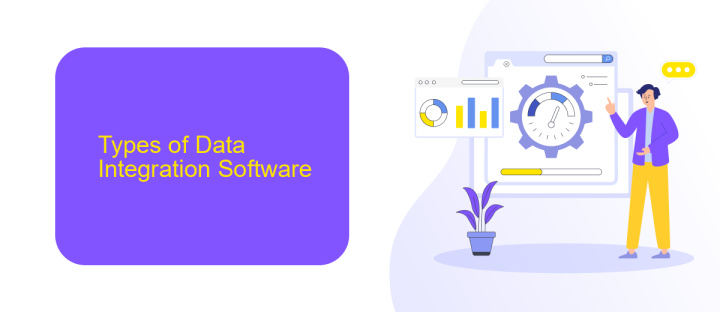What is Data Integration Software
Data integration software is a crucial tool for businesses and organizations that need to consolidate data from various sources into a unified view. This software streamlines the process of combining, cleansing, and transforming data, enabling better decision-making and operational efficiency. In this article, we will explore the key features, benefits, and use cases of data integration software, and how it can enhance your data management strategy.
What is Data Integration Software?
Data integration software is a tool that facilitates the process of combining data from different sources into a unified view. This type of software is essential for businesses that need to consolidate information from multiple databases, applications, and systems to improve decision-making and operational efficiency.
- Centralizes data from various sources
- Ensures data consistency and accuracy
- Enhances data accessibility and usability
- Supports real-time data processing and analytics
- Reduces manual data handling and errors
One notable example of data integration software is ApiX-Drive, which allows users to automate data transfers between different applications and services. With ApiX-Drive, businesses can easily set up integrations without the need for extensive coding knowledge, ensuring that their data flows seamlessly across platforms. This streamlines workflows and enhances overall productivity.
Types of Data Integration Software

Data integration software comes in various types, each designed to address specific integration needs. ETL (Extract, Transform, Load) tools are widely used for data warehousing, enabling the extraction of data from multiple sources, transforming it into a suitable format, and loading it into a destination system. API-based integration platforms, such as ApiX-Drive, facilitate real-time data exchange between different applications through APIs, providing seamless connectivity and automation without extensive coding.
Another type is data replication software, which ensures data consistency by copying and synchronizing data across different systems in real-time or at scheduled intervals. Middleware solutions act as intermediaries, allowing disparate systems to communicate and exchange data efficiently. Additionally, cloud-based integration services offer scalable and flexible solutions for integrating data across various cloud and on-premises applications, making it easier for businesses to manage their data ecosystems in a hybrid environment.
Benefits of Data Integration Software

Data integration software offers numerous advantages, making it an essential tool for businesses aiming to streamline their data management processes. By consolidating data from various sources into a unified view, organizations can achieve greater efficiency and accuracy in their operations.
- Improved Data Quality: Integration software ensures that data from different sources is consistent and accurate, reducing errors and discrepancies.
- Enhanced Decision-Making: With a comprehensive view of data, companies can make more informed decisions, leading to better business outcomes.
- Cost Efficiency: Automating data integration processes saves time and reduces the need for manual data handling, lowering operational costs.
- Scalability: Solutions like ApiX-Drive enable businesses to easily scale their data integration efforts as they grow, without significant additional investments.
- Streamlined Operations: By integrating various data sources, businesses can optimize their workflows and improve overall productivity.
Incorporating data integration software, such as ApiX-Drive, into your business strategy can provide a competitive edge by ensuring seamless data flow and improving the reliability of your data. This ultimately leads to more efficient operations and better strategic planning.
Challenges of Data Integration Software

Data integration software plays a crucial role in unifying disparate data sources, but it comes with its own set of challenges. One of the primary obstacles is the complexity of integrating various data formats and systems, which can lead to significant time and resource investments.
Another challenge is ensuring data quality and consistency. Inconsistent or poor-quality data can result in inaccurate analytics and decision-making, undermining the very purpose of data integration. Additionally, managing data security and compliance with regulations such as GDPR and HIPAA adds another layer of difficulty.
- Complexity in integrating diverse data sources
- Ensuring data quality and consistency
- Data security and regulatory compliance
- Scalability and performance issues
Services like ApiX-Drive can help mitigate some of these challenges by providing user-friendly tools for setting up and managing integrations. ApiX-Drive allows businesses to automate data workflows without the need for extensive technical knowledge, thereby reducing complexity and improving efficiency. However, even with such tools, ongoing monitoring and management are essential to ensure successful data integration.
- Automate the work of an online store or landing
- Empower through integration
- Don't spend money on programmers and integrators
- Save time by automating routine tasks
Selection Criteria for Data Integration Software
When selecting data integration software, it's essential to consider the scalability and flexibility of the solution. The software should be capable of handling the volume of data your organization deals with, and it should easily adapt to changing business needs. Additionally, compatibility with various data sources, including databases, cloud services, and on-premises systems, is crucial to ensure seamless data flow across your infrastructure.
Another critical factor is the ease of use and setup. Look for software that offers intuitive interfaces and robust support for automated workflows. For example, services like ApiX-Drive can simplify the integration process by providing pre-built connectors and user-friendly tools for configuring data transfers. Security features, such as data encryption and compliance with industry standards, should also be prioritized to protect sensitive information during integration processes.
FAQ
What is Data Integration Software?
Why is Data Integration important?
What are the common features of Data Integration Software?
How does Data Integration Software handle data from different sources?
Can Data Integration Software be used for automating workflows?
Time is the most valuable resource for business today. Almost half of it is wasted on routine tasks. Your employees are constantly forced to perform monotonous tasks that are difficult to classify as important and specialized. You can leave everything as it is by hiring additional employees, or you can automate most of the business processes using the ApiX-Drive online connector to get rid of unnecessary time and money expenses once and for all. The choice is yours!


